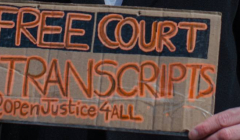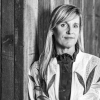
Why Open Justice For All is seeking change for victims
Campaigner Charlotte Schreurs explains why the creative industry is coming together to lobby for change for victims.

Building back better from the Coronavirus crisis demands the industry takes action to drive diversity.

This May a group of industry changemakers came together to launch BRiM (Black Representation in Marketing) This powerful initiative is focused on turning good intentions into meaningful actions. The goals are clear; to bring more Black people into the industry, to remove barriers that privileged white people, to enable more Black people to thrive in senior positions and ensure that Black people are fairly represented in marketing.
In the wake of the murder of George Floyd taking meaningful action to tackle racism is rightfully at the top of the business agenda. Yet as the industry looks to build back better in the wake of the economic and emotional turmoil of the Coronavirus crisis how do we meaningfully prioritise inclusivity?
There is no denying the data which shows the crisis has disproportionately impacted people of colour, women and those with caring responsibilities. The latest IPA census revealed the number of women employed in agencies fell disproportionately to men year-on-year. The number of women employed full time in member agencies fell by 13% from 13,088 to 11,411, while the number of men employed full time was down 8% from 11,700 to 10,752. While research from McKinsey and LeanIn.org reveals that a quarter of working women are currently considering scaling back their career ambitions or leaving the workforce entirely.
This once in a generation reset moment brings with it an opportunity to examine these figures and take action. To hold onto the inclusivity that comes with remote working and virtual events such as RISE. To not just ask the question ‘who isn’t in the room’ but what are we going to do to open the doors to the next generation of diverse talent?
With this in mind, we asked a range of industry leaders and supporters of RISE to share their thoughts on how the industry can place diversity and inclusion front and centre as we recover from the Coronavirus crisis.

Despite good intentions, our industry still lacks diverse representation, particularly in management and leadership roles. According to the IPA 2020 census just 6.4% of C-suite positions are held by people from ethnic backgrounds. If we want real change, where everyone is seen, heard and valued, we need to move from intent to action.
As an industry, we need to review our hiring practices. The more people you interview who don’t look or think like you, the more likely you are to hire someone from a diverse background. This is not just a good thing to do, it’s good for business. A diverse workplace where we can leverage our collective cognitive diversity helps us build better products, make better decisions, and better support our clients and the global community that use our products. This is why at Facebook, we made the pledge for our workforce to be 50% underrepresented people by 2024 and to have 30% more people of colour in our leadership by 2025.
Industry initiatives like Black Representation in Marketing (BRiM) play a vital role in enabling action. Already, some of the world’s largest brands and agencies have adopted the BRiM framework that provides simple steps for everyone to adopt and covers the whole marketing journey - from representation in the creative output itself, to the ecosystem of partners who create the marketing assets, as well as the core team at the heart of strategic campaign decisions.

As we begin to move out of this pandemic, I believe people will look back and say that we experienced a crisis within a crisis. Following the tragic events surrounding George Floyd’s death, our industry and many others experienced a global racial reckoning, which forced all brands and agencies to re-look at their ED&I efforts and wake up to the harsh reality that they were simply not doing enough to prioritise racial equity within their own business.
I have personally felt a huge responsibility as a leader to realise and confront any pre-existing racial biases I may have held, embark on a journey to unlearn and relearn and help lead a strategy forward for a business where we had self admittedly failed to attract and retain black, Asian and minority talent. We certainly don’t have it all right and I am sure won’t get it all right, but the mantra of progress of perfection allows me and my teams to move with confidence.
As a leader, industry and wider society this is table stakes. There’s no longer any excuse to not be paying attention to how you can play your own individual part in helping your company create a diverse workforce and equal environment for all. So as the industry recovers it should be business as usual to drive forward with energy, focus and plans that drive action. It’s the 10,000 small steps which allow us to feel like leaps, so nothing will magically change overnight but it’s about counting forward those steps one by one.

It’s been spoken about many times over the past 12 months, but now really is the opportunity for the industry to hit the big red reset button and re-build for the new world. From flexible working policies to building a more representative workforce, diversity and inclusion can no longer be a nice to have that looks good on your credentials, but needs to be built into the core of every business.
Agencies need to ensure they have a comprehensive strategy, one that sets KPIs and objectives. It’s about giving staff and leadership accountability, but also making the hires to drive your strategy while providing continuous training to all employees so that diversity and inclusion remains at the forefront of everyone’s minds.
It’s also important to recognise that we cannot do this alone, from recruitment partners and employability experts to supporting community and industry initiatives that outreach to underrepresented groups, there are incredible people out there to help us make the changes necessary for a better future.
This change will not come easy, or necessarily as quickly as we all hope it will - it requires investment and time. As long as people remember and maintain that diversity and inclusion is business essential, not a passion project, we will get there and progress will come faster.

The need for computer assisted technology and office accessibility are two critical requirements for people with disabilities joining the workforce. These have been revealed as easily surmountable during the enforced period of WFH adopted by the majority of the global workforce during the pandemic. The windowed Zoom and Teams meetings have brought a new sense of equality to many.
There is no longer a head at the ‘meeting table’; respect and to some extent authority is now more than ever earned, not assumed. These changes and many more in our work environment lead us towards a fundamentally increased level of empathy towards our peers and their lived experiences. As we look to the future, this empathy must be the cornerstone on which we build out and facilitate inclusive working practices.
This article first appeared in Creative Equals’ RISE trend report, created by Creativebrief. This free trend report wraps up key insights and learnings from the Creative Equals RISE 2021 conference.To download it please click here
Looks like you need to create a Creativebrief account to perform this action.
Create account Sign inLooks like you need to create a Creativebrief account to perform this action.
Create account Sign in